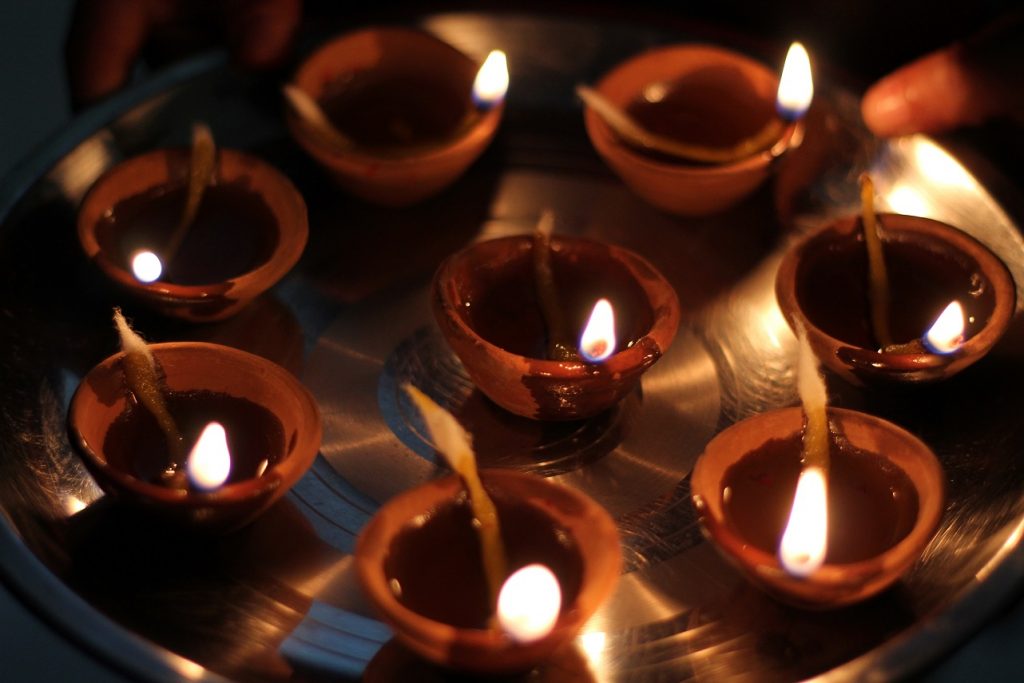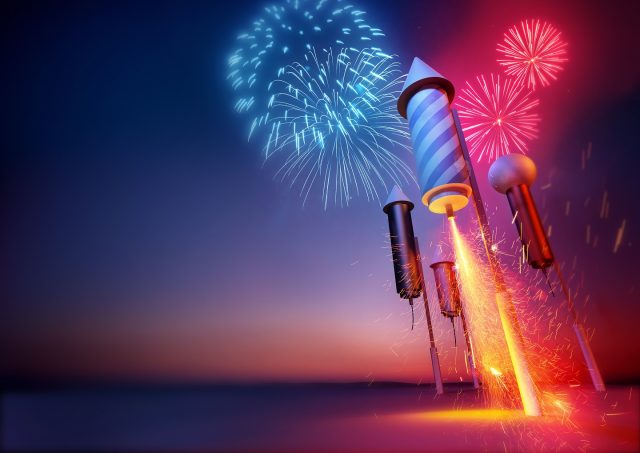A String of Lights
The biggest and grandest festival for Hindus worldwide, Diwali is named after a simple string of lights
A string of lights is a common feature, festooned on trees, on shops, on petrol pumps, buildings, homes…just about anywhere. However, come October-November, the month of Ashwitha/Aippasi according to the Vedic calendar, this string of lights lets you know that it is the magical time of the most important Hindu festival—Diwali or Deepavali.
The word ‘deepa’ means lights or lamps; ‘vali’ means a string…so the festival takes its name from these words. It is said that when Lord Rama, the seventh incarnation of Lord Vishnu, returned victorious after his war with the ten-headed demon king Ravana, it was a time of rejoicing for his people in Ayodhya. It was the new moon day and it was dark. The citizens lined up the walls, floors and rooftops of their homes with earthen lamps, filled it with oil and lit up the wicks and totally transformed their city into a brightly lit, welcoming place for their beloved, exiled king.
The other story connected to Diwali is about Narakasura, another demon who was killed by Lord Krishna, the eighth incarnation or avatar of Lord Vishnu. After repenting his evil deeds, the demon asked a boon that everybody should celebrate his death with new clothes, sweets and crackers and by illuminating their surroundings.
For many people it is the New Year according to the Vedic calendar…so the lamps symbolize hope, enlightenment and prosperity.
There used to be a time when we bought the earthen lamps, dunked them in water overnight and then left them to dry out in the sun. But today, painted, embellished diyas are readily available.
 Getting the lamps ready for the festival:
Getting the lamps ready for the festival:
- Buy earthen lamps in their natural state.
- Stock up on acrylic paints, brushes, paint remover (turpentine or nail polish remover).
- Rummage around and pull out bits and pieces of lace, beads, glitter stones, pebbles, shells or add them to your shopping list.
- Remember to buy T-lights to place in the lamps if you want to avoid the messy oil and wick routine.
- Buy a packet of long candles and matchboxes to help light the lamps.
- Get the kids to help out. Spread old newspapers on the floor and the whole family can decorate the diyas.
- Let the decorated diyas dry out.
- A few days before Diwali, light one lamp for a trial run.
- On the day of Diwali, place the lamps on trays, fill it up with oil and place the wicks; or place the T-lights.
- Place the lamps in the front entrance of your house or apartment and even on the balconies, making sure that they are not in the path of draughts of wind.
















































